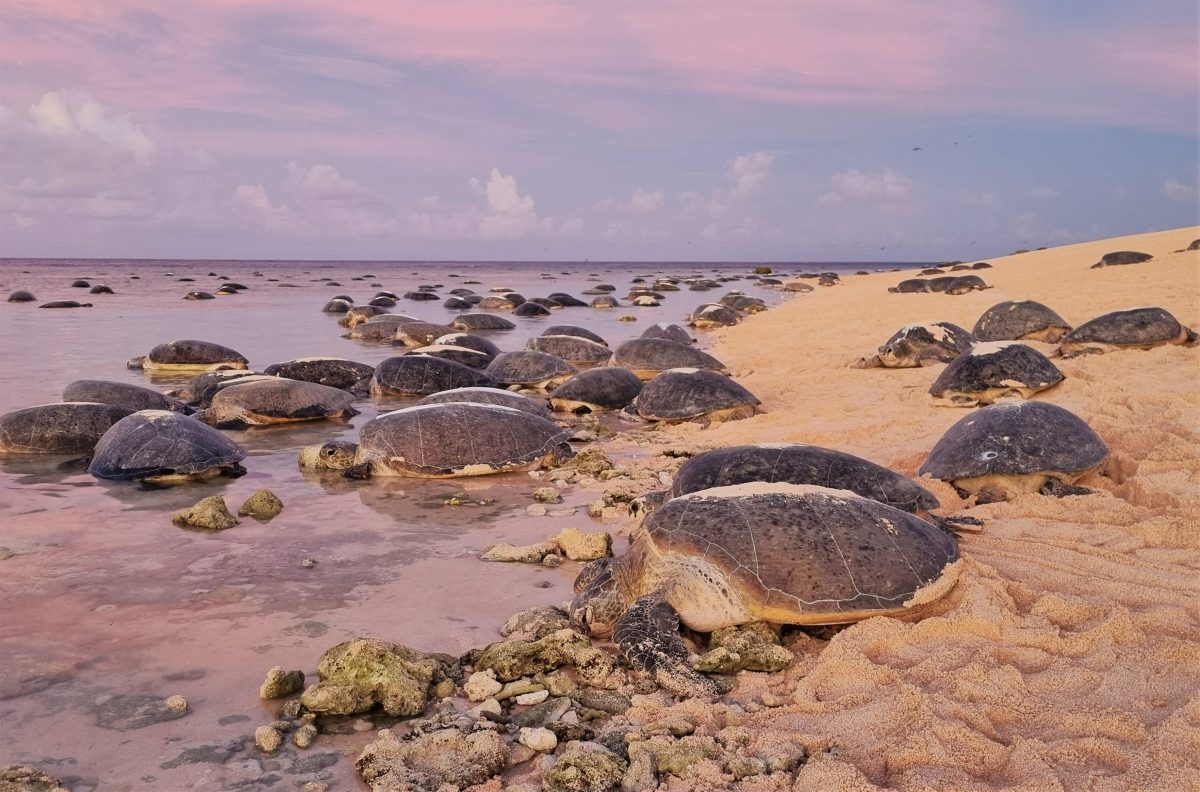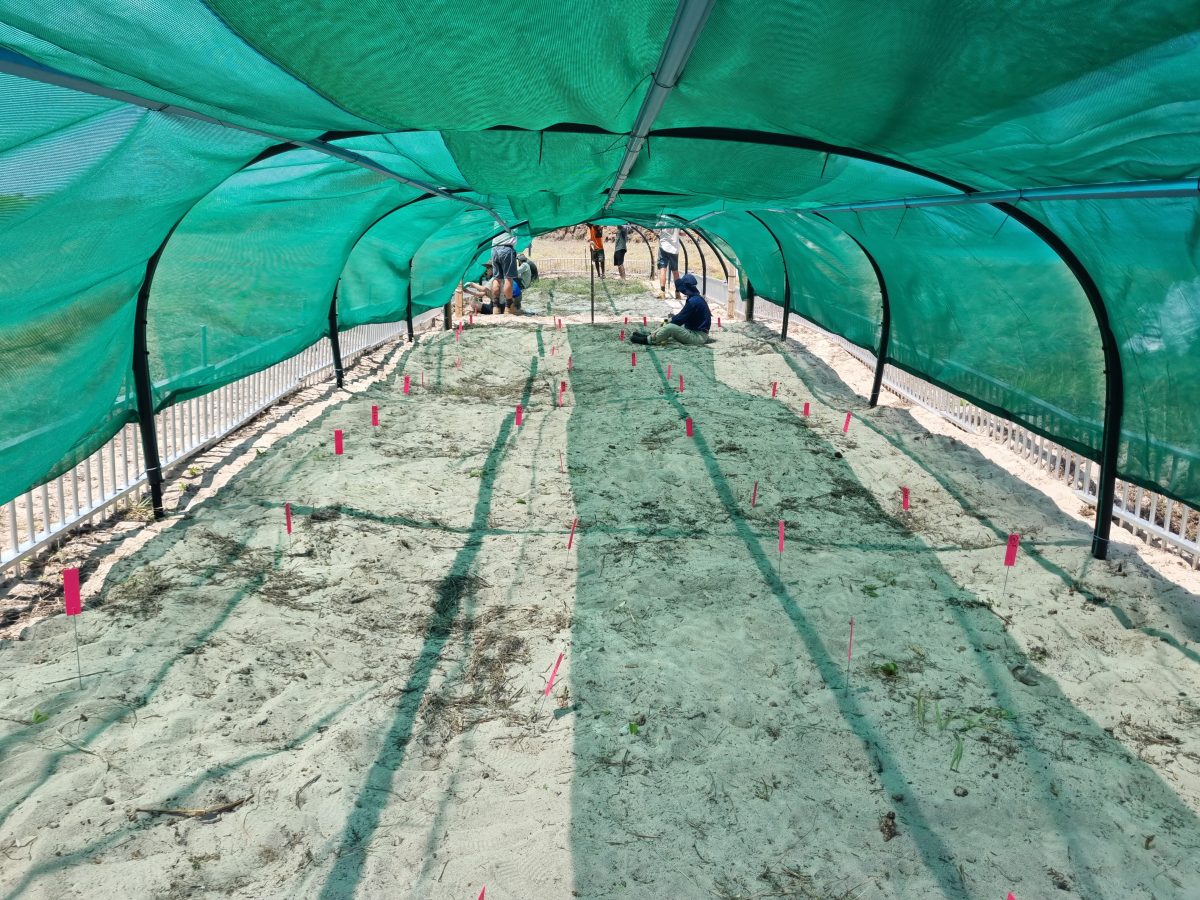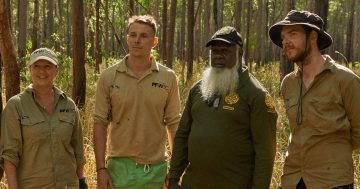
Green turtles return to the ocean after nesting on Raine Island. Photo: Department of the Environment, Tourism, Science and Innovation (DETSI) – Qld Government.
New results from the world’s largest green turtle rookery are offering fresh hope for this threatened species.
More than 3000 green turtle eggs were successfully relocated last summer from Raine Island to Sir Charles Hardy Islands (Wuthathi National Park (CYPAL)) – an Australian first at this scale.
The project tested whether large numbers of turtle eggs could be moved in remote locations to achieve better hatching outcomes.
Now as the 2025–26 turtle nesting season begins across the Great Barrier Reef, the numbers are in.
The 70 per cent hatching rate at the Sir Charles Hardy Islands has shown relocation is a viable method. The trial sets the stage for new cooling techniques aimed at producing more males.
Building on this success, a second egg relocation trip has just returned, transferring 50 clutches of eggs. Shade structures have been installed over the relocated nests to lower sand temperatures and boost male hatchling production.
While Raine Island is the world’s largest green turtle rookery, its nesting beach can be inundated during high tides – drowning eggs when nests are submerged for long periods.
Beach reprofiling at the island has been highly successful in mitigating this threat, but risks remain under projected sea level rise.
Climate change has also caused sand at Raine Island to become too warm for male hatchlings to develop. The sex of baby green turtles is determined by nest temperature – leading to a shortage of juvenile males in the northern Great Barrier Reef.
This trial is part of the Raine Island Recovery Project – a collaboration between the Great Barrier Reef Marine Park Authority, Queensland Parks and Wildlife Service (Department of the Environment, Tourism, Science and Innovation), the Wuthathi and Meriam Nation peoples, and project partners. The project is part of the Reef Joint Field Management Program.
This $3.5 million egg relocation project is funded through the Australian Government’s Saving Native Species program to secure the long-term viability of green turtles that nest on Raine Island, a priority place under the Australian Government’s Threatened Species Action Plan.
Wuthathi Elder, Johnson Chippendale underlined the project’s importance to his people.
“Raine Island (Thukuruu) is highly significant culturally to Wuthathi people, the reef systems, seas and all the species surrounding,” he said.
“We are proud to be partners in the project, involved in on-grounds works including the egg relocation works, aimed at increasing the number of green turtles’ combatting climate change with traditional and scientific knowledge combined.”
Chairman of Erub, part of Meriam Nation, Jimmy Gela, said the green turtle held deep cultural significance for the Meriam Nation of the communities of Ugar, Mer, Erub and Masig.
“We are proud to be part of this important work to protect their future,” he said.
“This successful relocation trial demonstrates the power of collaboration between Traditional Owners, government and scientists in responding to climate challenges.
“We look forward to continuing our efforts to safeguard this vital species for future generations.”
Learn more about the Raine Island Recovery Project.

Shade structures are used to cool relocated turtle eggs down. Photo: DETSI – Qld Government.



